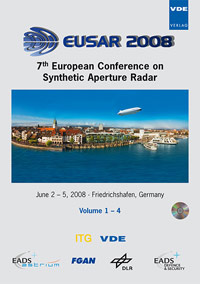Moving from PS to Slowly Decorrelating Targets: A Prospective View
Konferenz: EUSAR 2008 - 7th European Conference on Synthetic Aperture Radar
02.06.2008 - 05.06.2008 in Friedrichshafen, Germany
Tagungsband: EUSAR 2008
Seiten: 3Sprache: EnglischTyp: PDF
Persönliche VDE-Mitglieder erhalten auf diesen Artikel 10% Rabatt
Autoren:
Ferretti, Alessandro; Novali, Fabrizio (Tele-Rilevamento Europa – T.R.E. S.r.l., Milan, Italy)
Zan, Francesco de; Prati, Claudio; Rocca, Fabio (Politecnico di Milano, Milan, Italy)
Inhalt:
During the last 8 years Permanent Scatterer interferometry (PSInSAR) has been widely used as a powerful tool for surface deformation monitoring both for scientific and commercial projects. A few years after the introduction of this technology, it was highlighted how the constraints on the stability of the radar signature of the targets used as opportunistic measurement points could be too tight. Forcing the PS to be coherent in all interferometric pairs used in the analysis could cause the loss of information coming from scatterers exhibiting PS behavior only in a subset of SAR images. Another concern was related to the estimation of the DEM reconstruction: the problem here is to take advantage of the PS framework trying to extend the set of image pixels where an estimation of the elevation is possible. Apart from geometrical decorrelation and variations of the Doppler centroid values of the acquisitions, temporal decorrelation phenomena strongly limit the coherence values of many scatterers within the area of interest. The question arising is whether the presence of radar scatterers exhibiting high or moderate coherence levels at low temporal baselines (typically one month) can be useful for real life applications and, in case of positive answer, which algorithms are most suited to extract useful information from slowly decorrelating scatterers. Although this topic is still the subject of extensive research activities, this paper summarizes some facts that, in the authors’ opinion, will be the base of any future algorithm. In particular, the analysis of the coherence matrix computed on a pixel-by-pixel basis is shown to be a key-element of any study of decorrelating targets. Its modeling can be extremely useful to extract feature parameters for image segmentation.


